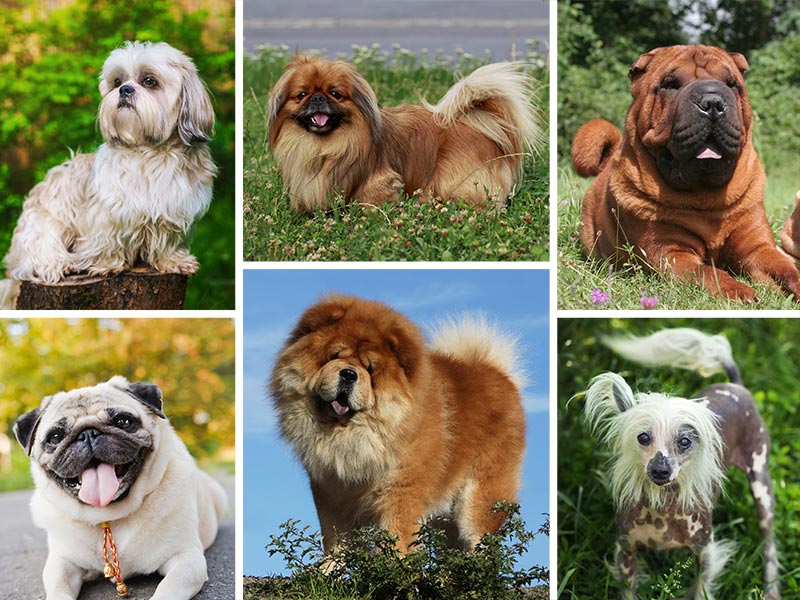
In the Gregorian solar calendar, which is the international civil calendar, the New Year is a fixed day, Jan. 1, around the world. The Chinese calendar, however, is a lunar calendar, which is why the Chinese New Year falls on a different day each year. This year, the New Year is on Feb. 16.
In the Chinese Zodiac, which is related to the Chinese calendar, animals appear in 12-year cycles, so each animal of the zodiac is associated with a specific year. And that animal and its supposed traits are associated with the year and with people born in that year. So, what is 2018? Our personal favorite: the Year of the Dog! Now that’s truly something to celebrate. In honor of the Chinese Year of the Dog, the Westminster Kennel Club is highlighting six Chinese breeds and their interesting histories. How much do you know about these breeds?
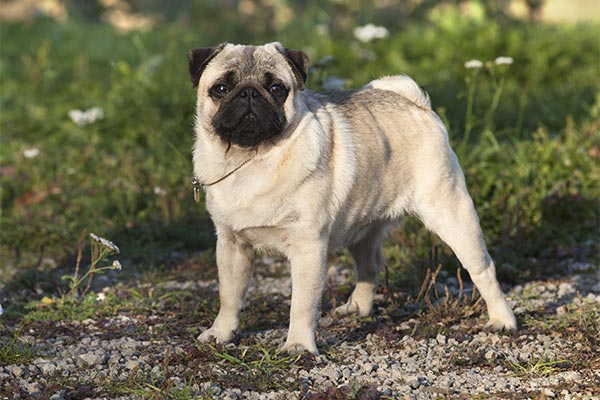
- The Pug is one of the oldest dog breeds, originating before 400 B.C., and he lived a life of luxury. The breed was prized by Chinese emperors and was sometimes even guarded by soldiers. The Pug was also a pet in Buddhist monasteries.
- Female Pugs were held in such high esteem that they were considered to be of the same rank as the Emperor’s wives.
- Dutch traders introduced the breed to Holland. It became the official dog of the House of Orange after a Pug alerted his master, William, the Prince of Orange, that the Spanish were approaching and thus saved his life. When William became king, his Pugs were at the ceremony.
- From Holland, the breed became popular with royalty throughout Europe, and England is responsible for the Pug we know and love today.
- The name probably comes from the Pug’s facial similarity to marmoset monkeys, which were popular pets in the early 18th century and were known as “pugs.”
- Although recognized by the American Kennel Club in 1885, the breed almost died out by the turn of the century. Thanks to a few dedicated breeders, the breed survived and thrived, becoming a popular household pet.
- In 1981, a Pug, Dhandy’s Favorite Woodchuck, became the only Pug to win Best in Show at Westminster.
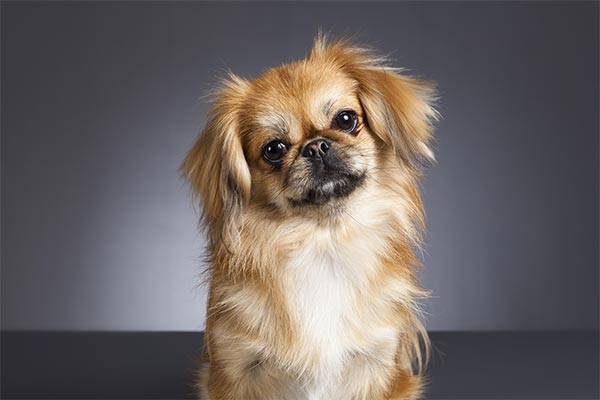
- Also a dog of royalty, the Pekingese dates back to at least the 8th century and the Tang dynasty. They were companions to the imperial family, and commoners were expected to bow down to them. As any Peke owner knows, the Pekingese still seems to expect this treatment.
- In ancient Chinese legend, a lion fell in love with a small monkey, known as a marmoset. In order to wed his love, he begged the patron saint of animals to reduce him to the size of the marmoset and let him keep the heart of a lion. The result of this union is said to be the Fu Dog, or the Lion Dog of China.
- The Peke was both a companion dog and an ornamental accessory for Chinese emperors and their courtiers. The ancient Chinese standard even refers to the dogs as having specific colors to match wardrobes, making the Peke a fashion accessory, as well.
- Despite their reputation as companions, the smallest of the breed, weighing 4-to-5 pounds, was called a “sleeve” Pekingese, and it was a ferocious guard dog. The nobility carried the dog in their voluminous sleeves to scare off anyone who threatened them.
- The breed may have remained forever only in China, but was introduced to the Western world as a result of the Opium War of 1860. The British invaded the imperial palace in Peking (now Beijing) and discovered five Pekingese, which they seized as a prize of war.
- One of these dogs was presented to Queen Victoria, who named it Looty.
- Today, Pekes are loyal and affectionate pets, although they have retained traits of their royal background, including a certain dignity.
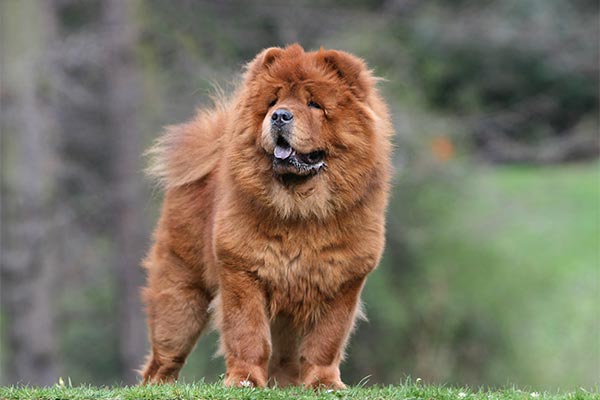
- Although his origins are shrouded in mystery, the Chow Chow breed may be more than 2,000 years old. The breed is recognizable in sculpture and pottery dating from at least 206 B.C., during the Chinese Han Dynasty.
- Some scholars, however, date the bred even earlier and believe that the Chow may have originated in the Arctic Circle and migrated to Siberia, Mongolia, and China. To add to the confusion, others believe that the Chow is the ancestor of the Samoyed, Keeshond, Pomeranian, and Norwegian Elkhound.
- During the Tang Dynasty in the 7th century, the Chinese emperor is thought to have had 2,500 Chows, which he used for hunting and sporting.
- The breed’s most unique feature is his blue-black tongue, seen only in Chows and Chinese Shar-Pei.
- Another unique Chow feature is his “scowl.” Anyone familiar with the breed knows that the frowning expression doesn’t represent his temperament.
- Speaking of temperament, the Chow is as dignified and refined as his noble bearing suggests. He’s loyal and affectionate with his family, but reserved with others. Some have called him the “Emperor of Dogs.”
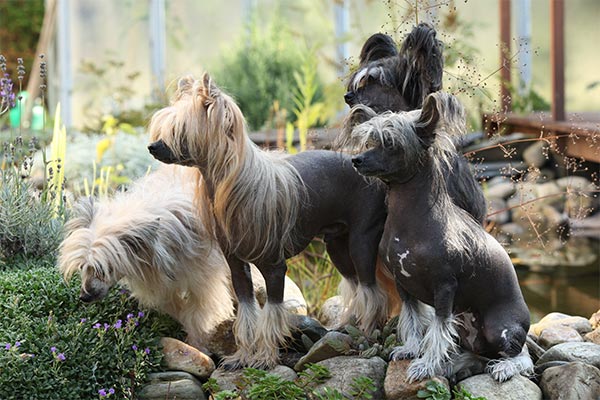
- The hairless Chinese Crested is unusual among dog breeds and instantly recognizable. There’s also a Powderpuff variety that has a full coat, although the Powderpuff gene is recessive.
- Despite his name, there is no factual proof that the Chinese Crested originated in China. In fact, he may have originated from an African hairless dog. The Chinese Crested, however, does make an appearance in Chinese history, dating as far back as the 13th century, and the Chinese are responsible for reducing the size of the dog to the size it is today.
- Chinese Cresteds traveled with Chinese traders and explorers, keeping boats free from vermin. The dogs were frequently sold or traded at various ports of call, and, as a result, a hairless dog was soon found in port cities around the known world.
- In the 1500s, Spanish conquistadors discovered a hairless breed in Mexico, the Xoloitzcuintli. In other parts of the world, the Chinese Crested was known as the Giza Hairless, Japanese Hairless, and South African Hairless. However, because of the belief that no native hairless dogs existed in South and North America, and that they must have originated in Asia, the name “Chinese Crested” stuck.
- Although they look fragile, Chinese Crested do well in many dog sports, including agility, flyball, lure coursing, and obedience.
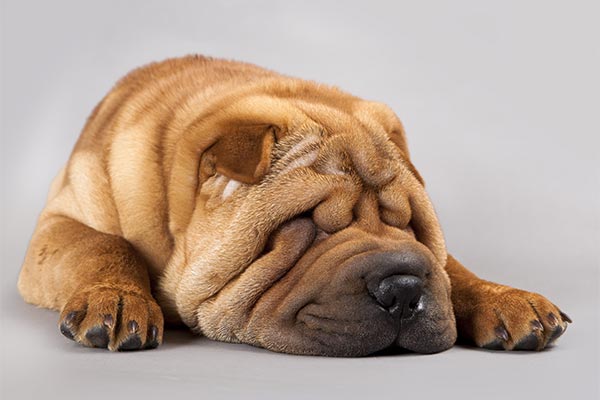
- The Chinese Shar-Pei shares a unique trait with the Chow Chow: a blue-black tongue. They are the only two breeds with this trait, although there is no proof that the two breeds are related.
- Another ancient breed, the Shar-Pei probably originated in the southern provinces of China around the village of Tai Li in Kwangtung Province. It has existed for centuries, most likely since the Han Dynasty, around 200 B.C.
- A 13th-century Chinese manuscript refers to a wrinkled dog, very much like the Shar-Pei.
- The name “Shar-Pei” means sand skin, but is usually translated as “sandpaper-like coat.” In fact, the rough, short coat is unique among dogs.
- During the early days of the People’s Republic of China, dogs were virtually eliminated from the country. Some Shar-Pei were then bred in Hong Kong and Taiwan.
- The first documentation of the breed in the United States dates from 1966. In 1973, interest in the Shar-Pei increased when a breeder in Hong Kong made an appeal to dog lovers in the U.S. to save the breed. Because of the enthusiastic response from a group of American breeders, a limited number of Shar-Pei arrived in the country in the fall of 1973.
- The Chinese Shar-Pei Club of America was formed one year later and has been in continuous existence since.
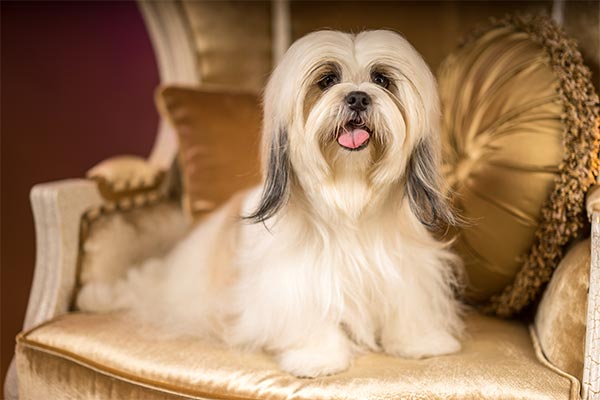
- As with most ancient Chinese breeds, the origin of the Shih Tzu isn’t known for sure. Paintings and documents from around 624 A.D. show a dog most likely to be a Shih Tzu. During the Tang Dynasty the Chinese court was given a pair of them from what we now assume was the Byzantine Empire.
- Another theory holds that the dog was introduced to China from Tibet and then bred in the Forbidden City of Peking (Beijing). A small dog, resembling a lion, which is most likely the Shi Tzu, was documented in the “Imperial Dog Book.”
- Court eunuchs, who competed to breed dogs the emperor would like, were responsible for breeding the Shih Tzu. The chosen dogs were represented in portraits and tapestries.
- The Shih Tzu’s sole purpose in life in the Chinese Empire was to be a loving and beloved companion. Fans of the breed still fall in love with his warm, sweet expression.
- The Shih Tzu is known as the “chrysanthemum-faced dog” because of the rounded way hair grows in all directions around his face.
- He’s also known as the “Lion Dog.” In fact, Shih Tzu means lion, and the dogs were special because they connected them to the lion associated as the protector of Buddhism.
- In the early 1930s, an Englishwoman living in China, Lady Brownrigg, discovered some Shih Tzu, which she imported to England. Along with some dogs saved by diplomats, these dogs made up the breeding stock of the Shih Tzu we know today.
- American soldiers stationed in Europe during World War II became familiar with the breed and introduced them to the U.S.
Are you seeing a theme weaving through all of these breeds? We have China to thank for some of the most interesting and enduring dog breeds in the world. And so, it’s only right to celebrate such venerable breeds this February, at the beginning of the Year of the Dog.

